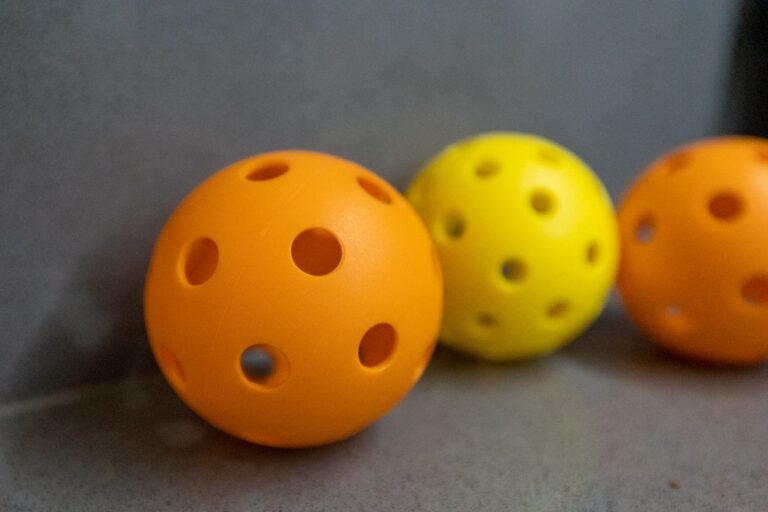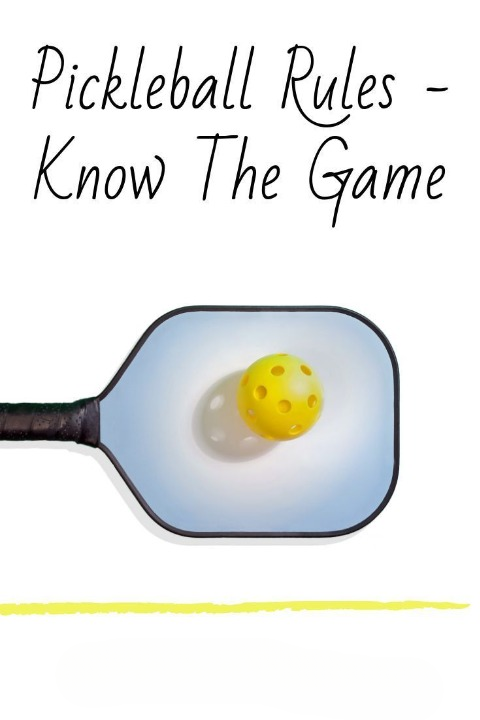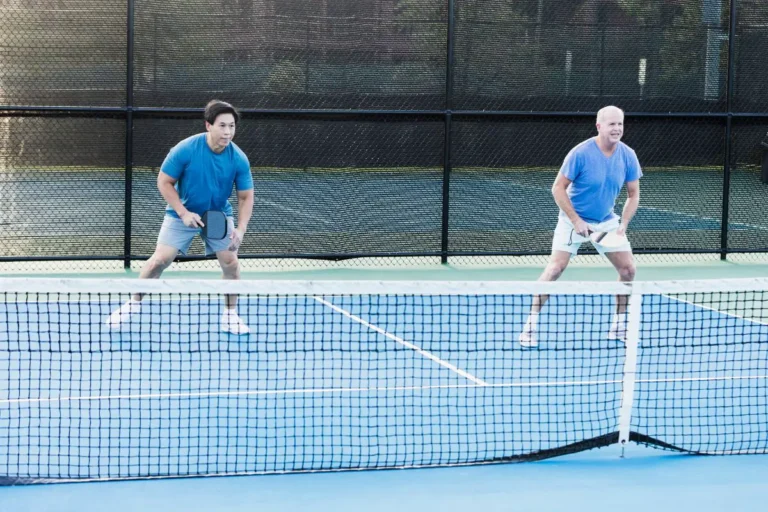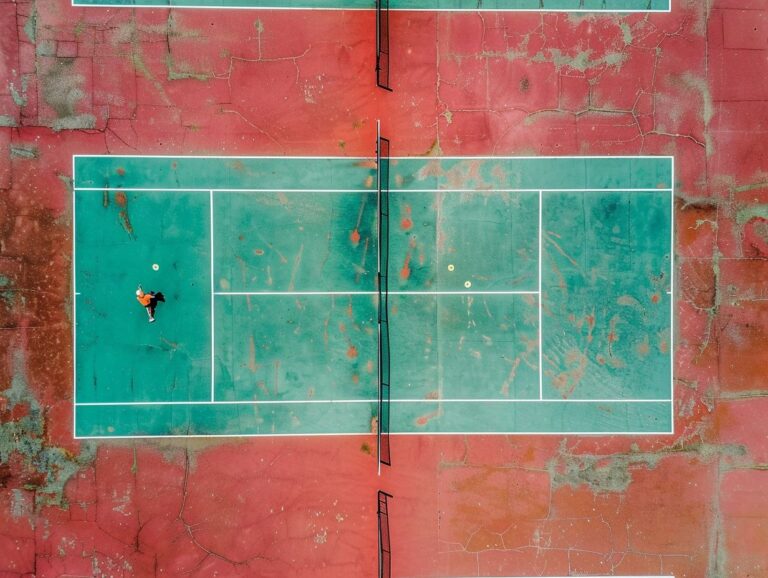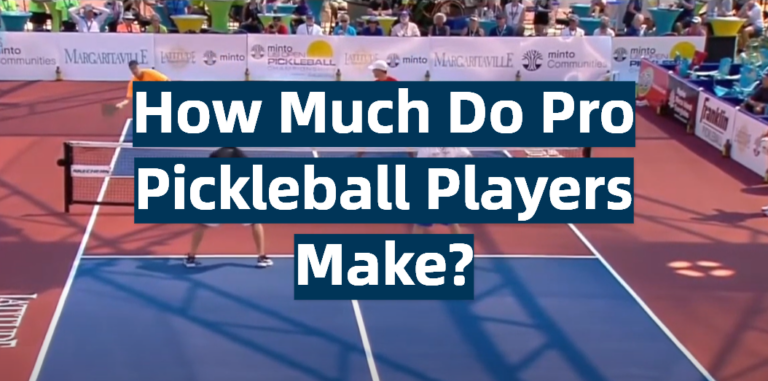Tennis Court vs Pickleball Court
Exploring the differences between tennis and pickleball courts, it’s evident that size and net height vary significantly. Tennis courts are 60 feet wide and 120 feet long, suitable for various surfaces, whereas pickleball courts are 20 feet wide and 44 feet long, primarily on hard surfaces. Both sports cater to doubles and singles, but pickleball features a unique no-volley zone known as “the kitchen.”
Key Takeaways:
- Tennis courts are significantly larger than pickleball courts, with pickleball courts being only a fraction of the size.
- While the net height is similar, pickleball has a distinctive “kitchen” area near the net where volleys are prohibited.
- Tennis relies on rackets and felt balls, whereas pickleball uses paddles and perforated plastic balls.
- Tennis is generally more competitive, while pickleball has a more social and relaxed vibe.
- Tennis courts can be converted for pickleball, but not vice versa due to size constraints.
If you’re a pickleball enthusiast (or even just mildly curious about the game), chances are you’ve noticed some striking similarities and differences between pickleball and tennis courts. After all, they’re both court sports with nets, but the experience of playing on each surface is vastly different. It’s like comparing apples to oranges – or should we say, tennis balls to pickleball whiffle balls?
In this article, we’ll dive deep into the nitty-gritty details that separate these two beloved sports, exploring everything from court dimensions to equipment and gameplay styles. Buckle up, folks, because by the end of this read, you’ll be a veritable court connoisseur, able to spot the differences between a tennis court and a pickleball court from a mile away (or at least from across the street).
Court Size and Layout
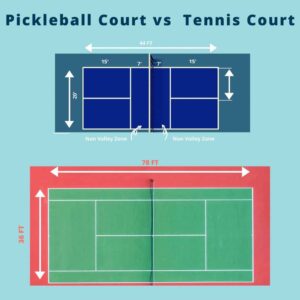
Dimensions of Tennis and Pickleball Courts
Let’s start with the most obvious distinction: size matters, folks. Tennis courts are absolute behemoths compared to their pickleball counterparts. A standard tennis court measures a whopping 60 feet wide and 120 feet long, while pickleball courts are a mere 20 feet wide and 44 feet long. In fact, you could comfortably fit four pickleball courts on a single tennis court – talk about real estate efficiency!
| Court Type | Width | Length |
|---|---|---|
| Tennis | 60 ft | 120 ft |
| Pickleball | 20 ft | 44 ft |
Now, let’s put those numbers into perspective. Imagine trying to play a game of tennis on a pickleball court – it would be like a couple of mice scurrying around in a shoebox. On the flip side, if you tried to play pickleball on a tennis court, you’d be running back and forth like a cartoon character, probably burning enough calories to justify an entire cheesecake afterwards.
Court Surface Types
While we’re on the topic of court dimensions, it’s worth mentioning that tennis and pickleball courts can be constructed with different surface types. Tennis courts can be found on:
- Grass
- Clay
- Synthetic materials
- Hard courts
Pickleball, on the other hand, is typically played on hard surfaces like concrete or asphalt – no fancy grass or clay courts here, folks.
Imagine trying to play pickleball on a grass court – you’d be slipping and sliding like a penguin on an ice rink, chasing after that little perforated ball like it was the last doughnut at the office party. Meanwhile, playing tennis on an asphalt court would be like trying to run a marathon on a blistering hot day – not exactly the most forgiving surface for your joints.
Net Specifications
Height Differences
Alright, now that we’ve covered the court itself, let’s talk about that all-important net that divides the playing field. At first glance, you might think the nets for tennis and pickleball are pretty similar – after all, they’re both made of netting material and stretch across the court. But oh, how wrong you would be, my friend.
For tennis, the net height at the posts is a towering 42 inches, while the center of the net sits at a more reasonable 36 inches. Pickleball, on the other hand, keeps things a bit lower to the ground:
- Net height at posts: 36 inches (same as tennis)
- Net height at center: 34 inches
It’s like pickleball was designed for the vertically challenged among us (no offense, shorter folks – we love you just the same).
Court Markings and Volley Zones
But wait, there’s more! Pickleball has this quirky little feature called the “kitchen” – a seven-foot no-volley zone extending from the net on each side. Step into this area, and you’d better be prepared to let that ball bounce first, or else you’ll be committing the pickleball equivalent of a cardinal sin.
Tennis courts, on the other hand, don’t have such strict volley rules (unless you’re playing some hardcore tennis variant we’re not aware of). Instead, they have those handy little doubles alleys marked on the court, indicating where players should stand during doubles matches. It’s like having your own personal parking spots on the court, but for humans instead of cars.
Equipment Used
Rackets vs. Paddles
Now, let’s talk about the tools of the trade: rackets and paddles. Tennis rackets are sturdy, hefty beasts, typically:
- Weighing around 11.5 ounces
- Constructed with synthetic materials like graphite or carbon fiber
- Designed to withstand the force of those felt-covered tennis balls hurtling towards you at breakneck speeds
Pickleball paddles, on the other hand, are like the kid siblings of tennis rackets – lighter, more compact, and with a slightly different attitude. These paddles:
- Weigh between 6.5 and 9 ounces
- Are often made of composite materials like aluminum or graphite
- Are built to handle the gentle, bouncy nature of those perforated pickleball balls
Balls for Tennis and Pickleball
Speaking of balls, let’s talk about the projectiles that make these sports possible. Tennis balls are those iconic bright green (or sometimes yellow) spheres:
- Made of rubber
- Covered in a fuzzy felt exterior
- Designed to bounce high and travel fast, demanding quick reflexes and cardiovascular endurance
Pickleball balls, on the other hand, are like the quirky, eccentric cousins of tennis balls:
- Made of perforated plastic (think: whiffle balls, but more sophisticated)
- Designed to have a lower, more controlled bounce
- Perfect companions for rallies on the pickleball court without chasing the ball too far
Playing the Game
Gameplay Style
Now, let’s talk about the heart and soul of these sports: the gameplay itself. Tennis is often seen as:
- A more competitive, intense endeavor
- Where players battle it out like gladiators
- A game of finesse, power, and strategic thinking
- Every point counts and the pressure is always on
Pickleball, on the other hand, has a more relaxed, social vibe:
- A lightheartedness and camaraderie permeates
- Players can still be competitive and passionate
- But there’s a backyard BBQ atmosphere
- Just having fun and maybe burning off that extra helping of potato salad
Rules and Scoring
Of course, no discussion of gameplay would be complete without the rules and scoring systems. Tennis has:
- An intricate set of rules
- The infamous “love” scoring
- The dreaded foot fault issue
- A massive rulebook to navigate
Pickleball keeps things straightforward:
- Games typically played to 11 points
- Must win by two clear points
- “Rally scoring” where every serve results in a point
- Fun variants like “Skinny Singles” [https://pickleballtoolbox.net/pickleball-skinny-singles-rules/]
Court Adaptability
Converting Tennis Courts for Pickleball
Now, the age-old question: can you convert a tennis court into a pickleball court, or vice versa? The answer is a resounding “sort of.”
You see, because pickleball courts are so much smaller than tennis courts, it’s relatively easy to convert a tennis court for pickleball by:
- Marking off designated pickleball court areas
- Setting up portable pickleball nets
- Adding the “kitchen” line markings
However, going the other way is basically impossible. There’s just no way to enlarge a pickleball court to regulation tennis court dimensions without rebuilding the whole thing from scratch.
So unless you have a massive backyard and an Elon Musk-sized bank account, it’s probably best to stick to converting existing tennis courts rather than dreaming up custom pickleball complexes.
Continued:
Limitations and Flexibility
Of course, even when converting a tennis court for pickleball, there are some limitations and factors to consider:
- Court Surface: While you can mark lines on any flat surface, the ideal pickleball court has a smooth, consistent texture without cracks or debris. Those fancy clay or grass tennis courts may not make the perfect pickleball playground.
- Space Constraints: Don’t have a full-sized tennis court to work with? No problem! You can get creative and set up pickleball courts in areas like:
- Driveways
- Parking lots
- Recreational areas
Just be mindful of boundaries and make sure you have enough clearance space around the court.
- Lighting Needs: Playing at night? Outdoor tennis courts often have lighting setups that can work for pickleball too. Indoor courts or makeshift setups may require portable lighting solutions.
The beauty of pickleball is its versatility. As long as you have a decent surface area and a portable net, you can pickleball-ify just about any space. It’s like the world’s most low-maintenance indoor/outdoor sport!
Conclusion
Well, folks, we’ve taken you on a journey through the key differences between tennis courts and pickleball courts. From dimensions and surfaces to equipment and gameplay styles, we’ve covered it all.
At the end of the day, both sports offer unique experiences catered to different tastes and skill levels. Tennis is the intense, competitive cousin that demands stamina and precision. Pickleball is the laidback, quirky relative that just wants to have a good time (but can still bring the heat when needed).
[https://pickleballtoolbox.net/how-long-has-pickleball-been-around/]
So whether you’re a seasoned tennis pro looking to mix things up or a total newcomer to the court sports world, don’t be afraid to give pickleball a try. Who knows? You might just fall in love with this peculiar little game and its whiffle ball ways.


